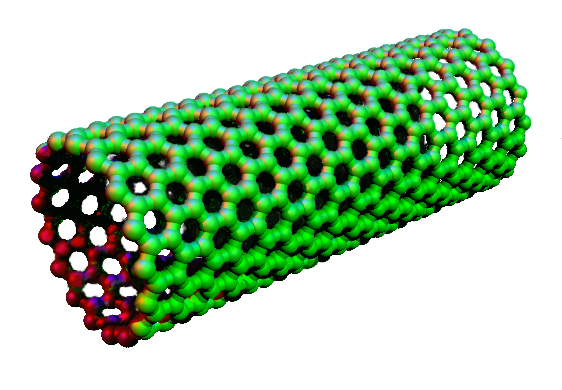Due to the global impact of the COVID-19 pandemic, experts are constantly looking forward to developing new technologies that can prevent infections caused by bacteria and viruses. One of the effective strategies is using a biosensor, a measurement device that can detect several biomolecules like those present in common pathogens.

Novel Biosensing Method
A Bochum, Duisburg, and Zurich research team developed modular optical sensors that effectively detect viruses and bacteria. The interdisciplinary group comprises Professor Sebastian Kruss, Justus Metternich, and their colleagues from Ruhr University Bochum, the Fraunhofer Institute for Microelectronic Circuits and Systems, and ETH Zurich.
The researchers used fluorescent carbon nanotubes containing an innovative type of DNA anchors which serve as molecular handles. These anchor structures can function as conjugate biological recognition units interacting with bacterial or viral molecules in the nanotubes.
Tubular nanosensors made of carbon were used in this study. When carbon nanotubes are irradiated with visible light, they emit light close to the range of infrared radiation. This is an ideal approach for optical sensing since the level of signals in this range is decreased.
Sebastian Kruss and his team had an earlier study showing the manipulation of nanotube fluorescence and its effect in detecting essential biomolecules. In this recent experiment, they searched for a novel approach to customizing carbon sensors to be used in various target molecules straightforwardly.
It was found that the DNA structures with guanine quantum defects hold the key to successfully customizing sensors. In this method, the DNA bases are linked to the nanotube to make a defect in its crystal structure. This results in a significant change in the fluorescence of the nanotubes at the quantum level. The quantum defect also serves as a molecular handle which allows the introduction of a detection unit. It can be adapted to the target molecule to identify a particular protein contained in a virus or bacteria.
The researchers also examined the effectiveness of their nanotubes in sensing SARS-CoV-2, the strain of coronavirus that causes COVID-19. They discovered that the fluorescent sensors could monitor the presence of its spike protein with a high degree of reliability. When the selectivity of sensors was compared, those with guanine quantum defects were higher than those without such defects. Additionally, the sensors with quantum defects were found to be more stable in solution.
READ ALSO: Novel Electrochemical Biosensor Shows High Sensitivity on Cancer Biomarker for Early Diagnosis
What are Biosensors?
A biosensor refers to a device that can measure biological or chemical reactions by producing signals proportional to the concentration of the substance that needs detection. It is also known as an optrode, biochip, immunosensor, resonant mirror, glucometer, chemical canary, and biocomputer.
Biosensors are composed of a transducer and a biological element, such as an enzyme, a nucleic acid, or an antibody. As the element interacts with the analyte being studied, the transducer transforms the biological response into an electrical signal. This principle was first discovered by American biochemist Leland C. Clark in 1956 in an experiment where he used platinum electrodes to detect oxygen.
Biosensor probes have become more sophisticated due to the combination of microelectronics and biotechnology. As precious devices, biosensors have significant applications in various industries that require measuring a wide spectrum of substances such as ash gases, organic compounds, ions, and pathogens.
RELATED ARTICLE: New Absorber Will Lead to Better Biosensors
Check out more news and information on Biosensors in Science Times.



![Earth's Quasi-Moon Kamo‘oalewa Could Originate From Lunar Surface Not Asteroid Belt [Study]](https://1721181113.rsc.cdn77.org/data/thumbs/full/53275/89/56/50/40/earths-quasi-moon-kamo-oalewa-could-originate-from-lunar-surface-not-asteroid-belt-study.png)










